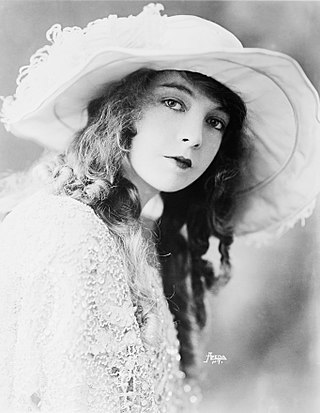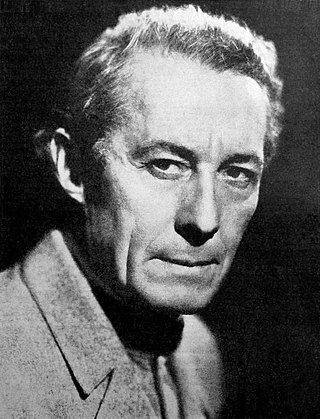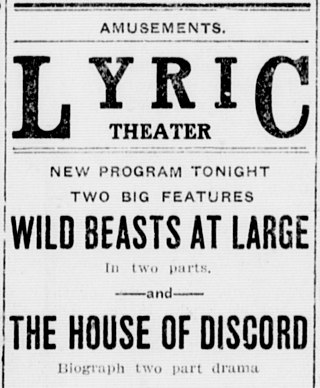
Lillian Diana Gish was an American actress. Her film-acting career spanned 75 years, from 1912, in silent film shorts, to 1987. Gish was called the "First Lady of American Cinema", and is credited with pioneering fundamental film performance techniques. In 1999, the American Film Institute ranked Gish as the 17th greatest female movie star of Classic Hollywood cinema.

Dorothy Elizabeth Gish was an American stage and screen actress. Dorothy and her older sister Lillian Gish were major movie stars of the silent era. Dorothy also had great success on the stage, and was inducted into the American Theater Hall of Fame. Dorothy Gish was noted as a fine comedian, and many of her films were comedies.

Biograph Studios was an early film studio and laboratory complex, built in 1912 by the Biograph Company at 807 East 175th Street, in The Bronx, New York City, New York.

The Biograph Company, also known as the American Mutoscope and Biograph Company, was a motion picture company founded in 1895 and active until 1916. It was the first company in the United States devoted entirely to film production and exhibition, and for two decades was one of the most prolific, releasing over 3000 short films and 12 feature films. During the height of silent film as a medium, Biograph was the most prominent U.S. film studio and one of the most respected and influential studios worldwide, only rivaled by Germany's UFA, Sweden's Svensk Filmindustri and France's Pathé. The company was home to pioneering director D. W. Griffith and such actors as Mary Pickford, Lillian Gish, and Lionel Barrymore.

Mae Marsh was an American film actress whose career spanned over 50 years.

Helen Marguerite Clark was an American stage and silent film actress. As a movie actress, at one time Clark was second only to Mary Pickford in popularity. With a few exceptions and some fragments, most of Clark's films are considered lost.

Robert Emmett Harron was an American motion picture actor of the early silent film era. Although he acted in over 200 films, he is possibly best recalled for his roles in the D.W. Griffith directed films The Birth of a Nation (1915) and Intolerance (1916).

Judith of Bethulia (1914) is an American film starring Blanche Sweet and Henry B. Walthall, and produced and directed by D. W. Griffith, based on the play "Judith and the Holofernes" (1896) by Thomas Bailey Aldrich, which itself was an adaptation of the Book of Judith. The film was the first feature-length film made by pioneering film company Biograph, although the second that Biograph released.

Henry Brazeale Walthall was an American stage and film actor. He appeared as the Little Colonel in D. W. Griffith's The Birth of a Nation (1915).

Way Down East is a 1920 American silent romantic drama film directed by D. W. Griffith and starring Lillian Gish. It is one of four film adaptations of the melodramatic 19th century play of the same name by Lottie Blair Parker. There were two earlier silent versions and one sound version in 1935 starring Henry Fonda. Griffith's version is particularly remembered for its climax in which Gish's character is rescued from doom on an icy river.

Orphans of the Storm is a 1921 American silent drama film by D. W. Griffith set in late-18th-century France, before and during the French Revolution.

The New York Hat is a silent short film which was released in 1912, directed by D. W. Griffith from a screenplay by Anita Loos, and starring Mary Pickford, Lionel Barrymore, and Lillian Gish.

Violet Louise Wilkey was an American child actress who appeared in 18 films over a four-year period during the silent film era.

Oil and Water is a 1913 film directed by D. W. Griffith and starring Blanche Sweet. The supporting cast includes Henry B. Walthall, Lionel Barrymore, and Harry Carey. A stage dancer (Sweet) and a serious-type homebody (Walthall) discover, after marriage, that their individual styles don't mesh. The movie includes elaborate dance sequences.

The Painted Lady is a 1912 American short drama film directed by D. W. Griffith and starring Blanche Sweet. A print of the film survives.

True Heart Susie is a 1919 American drama film directed by D. W. Griffith and starring Lillian Gish. A print of the film survives in the film archive of the British Film Institute. The film has seen several VHS releases as well as a DVD issue.

Gladys Egan was an early 20th-century American child actress, who between 1907 and 1914 performed professionally in theatre productions as well as in scores of silent films. She began her brief entertainment career appearing on the New York stage as well as in plays presented across the country by traveling companies. By 1908 she also started working in the film industry, where for six years she acted almost exclusively in motion pictures for the Biograph Company of New York. The vast majority of her screen roles during that period were in shorts directed by D. W. Griffith, who cast her in over 90 of his releases. While most of Egan's films were produced by Biograph, she did work for other motion-picture companies between 1911 and 1914, such as the Reliance Film Company and Independent Moving Pictures. By 1916, Egan's acting career appears to have ended, and she no longer was being mentioned in major trade journals or included in published studio personnel directories as a regularly employed actor. Although she may have performed as an extra or in some bit parts after 1914, no available filmographies or entertainment publications from the period cite Egan in any screen or stage role after that year.

The Biograph Girl is a musical with a book by Warner Brown, lyrics by Brown and David Heneker, and music by Heneker. Its plot focuses on the silent film era and five pioneers of American cinema - actresses Mary Pickford and Lillian Gish, directors D. W. Griffith and Mack Sennett, and Paramount Pictures founder Adolph Zukor.
Men and Women is an extant short 1914 silent film produced by the Biograph Company and released by General Film Company. It is based on the 1890 play of the same name by David Belasco and Henry Churchill de Mille. It stars Lionel Barrymore, Blanche Sweet and Marshall Neilan. Sweet and Neilan would later marry in real life.

The House of Discord (1913) is a silent American drama film directed by James Kirkwood, Sr., written by F. E. Woods and A. Clayton Harris from a play by William C. deMille. The film stars Lionel Barrymore and marked the theatrical film debut of actor Jack Mulhall.






















